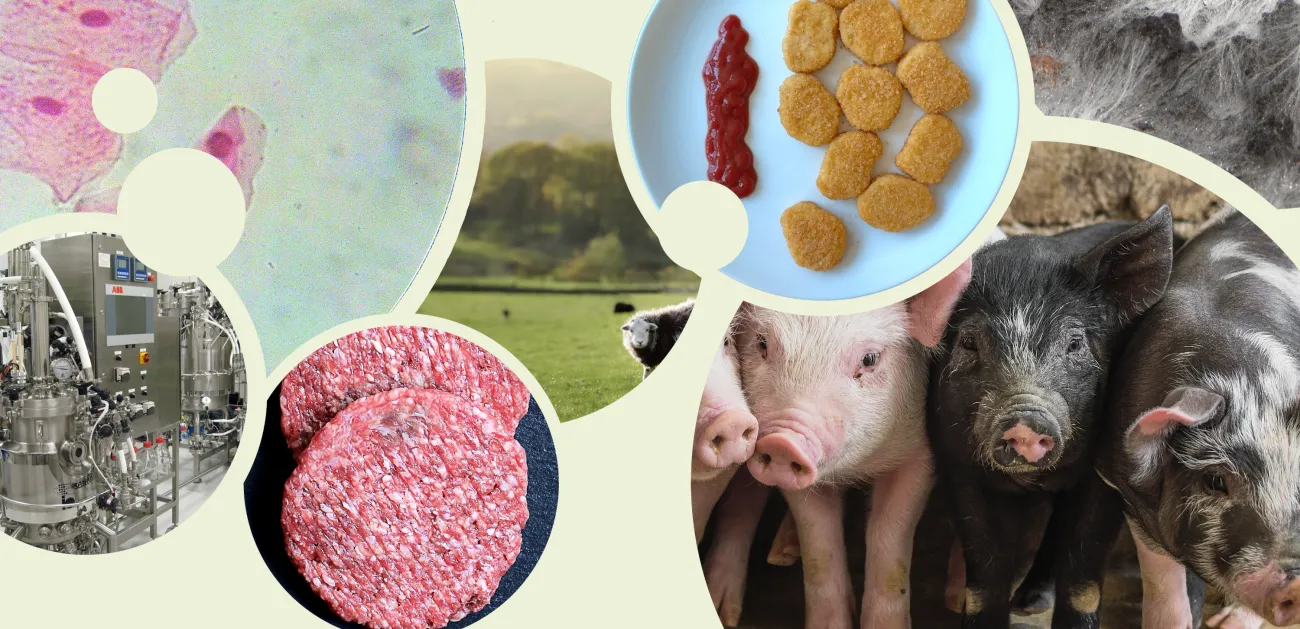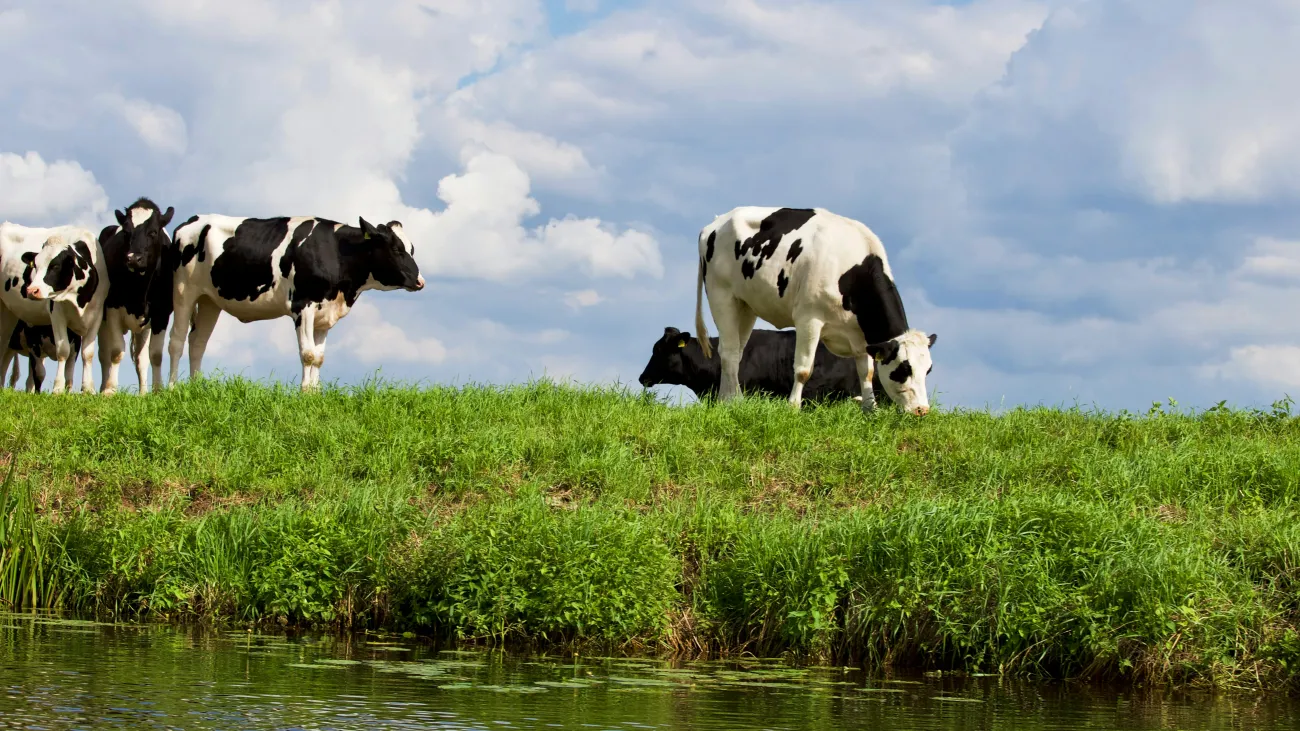This article projects the land use change and greenhouse gas emissions associated with a circular food system and protein transition. The authors suggest land use and greenhouse gas emissions can be reduced by adopting circular principles without reducing current levels of protein intake and that fully plant-based diets result in nutrient inadequacies. The authors also argue that agricultural land can potentially be spared by feeding farmed animals with low-cost biomass such as by-products, food waste and crop residues. They suggest freed up land can be used for non-agricultural purposes such as afforestation, leading to carbon sequestration.

Summary
This article projects the land use change and greenhouse gas emissions associated with two possible approaches to redesigning the food system that have gained significant attention in recent years: protein transition and circularity in a food system. The authors define the protein transition in the European context as the reduction of animal- as opposed to plant- sourced proteins in the diet. They note that the term ‘transition’ is used to refer to the end states or optimal outcomes of the protein transition, rather than the process itself. The fundamental principles of circularity are described by the authors as a system which centres on avoiding and reusing waste and by-products so as to close biomass and nutrient cycles. The authors modelled circularity by allowing farmed animals to be fed from organic waste streams and agricultural residues, humans to consume all edible parts of farmed animals and nutrient recycling to be improved by planting leguminous crops that reduce the need for artificial fertiliser inputs.
The article models the optimal ratio between animal sourced proteins (ASP) and plant sourced protein (PSP) within a circular food system. The authors use land-use (LU) and greenhouse gas (GHG) emissions as proxies for environmental impact and the EAT-Lancet diet as a guide for meeting nutritional requirements for macro and micronutrients. The model is designed to minimise LU and GHG emissions whilst meeting nutritional requirements. They find that environmental impacts are reduced when the ratio of ASP to PSP shifts from the current ratio of 60:40 to 40:60. They find that optimising diets, cropping patterns, animal husbandry and trade within a circular food system results in a greater relative reduction in environmental impact compared to simply consuming more plant sourced protein.
The authors use the Circular Food System (CiFoS) biophysical model to develop 18 scenarios related to the ASP:PSP ratios under two dietary approaches. One approach shifts diets toward the EAT-Lancet diet recommendations with the exception of maintaining current European protein intake of 82 g protein per capita per day. The second approach also moves diets towards the EAT-Lancet diet recommendations but additionally lowers protein intake to the 46 g protein per capita per day recommended by the European Food Safety Authority (EFSA).
The current ASP:PSP ratio in Europe is 60:40, meaning 60% of protein is animal sourced and 40% is plant sourced. This ratio was used as the reference level for the model. The 18 scenarios were built by reducing the ratio in steps of 20% towards a fully plant-based diet whilst minimising nutrient deficiencies.
The article has three major findings:
- Improving the use of food waste (such as feeding agricultural by-products to animals) and reducing transportation whilst maintaining the current ASP:PSP ratio of 60:40 demonstrated a reduction in LU (44%) and GHG emissions (70%). These changes were part of shifting to a circular food system.
- LU and GHG emissions can be further reduced by 60% and 81% from the reference level respectively by adopting circularity principles and shifting the ASP:PSP ratio towards more PSP. The optimal ASP:PSP ratio was found to be 40:60.
- A plant-based diet containing less than 18 g of protein from animal sources per capita per day showed nutrient inadequacies and worse environmental impacts. These environmental impacts are related to practices which would be required to address these inadequacies such as further cultivation of nutrient-dense crops which negatively impacts LU. The main nutrient inadequacies were vitamin B12, eicosapentaenoic acid (EPA) and docosahexaenoic acid (DHA), calcium, vitamin B3 and energy.
The authors break down the various sources of protein and how they shift compared to the FAO reference intake in the optimised scenario under current protein intake. Optimised scenarios were those which adopted circular food system principles and decreased the ASP:PSP ration to 40:60. They found red meat (62%), egg (25%) dairy (43%) and fish (20%) consumption all decreased in the optimised scenario. Only chicken (25% to 38%) consumption increased in the optimised scenario. They also found legumes (400% and 600%) and vegetables (33% and 200%) consumption increased respectively when LU and GHG emissions respectively were minimised. Grains were an essential source of protein when minimising LU (20% reduction) but less so when minimising GHG emissions. In the optimal scenarios, legume (especially soybean), vegetable and oil crop production significantly increased whilst forage crops and permanent grassland decreased significantly.
The authors found that in optimal scenarios which maintained current protein intake levels (rather than optimised intakes), there was an overall reduction in the number of animals reared. They found that these scenarios led to increased consumption of farmed fish and broilers due to the relatively low LU and GHG emissions of these systems compared to other ASPs.
The authors note that feed ingredients (co-products, food waste, grass resources, animal by-products and, if not otherwise used in the food system, high-quality biomass such as grains) can be selected in their model to meet animal nutrient requirements. They do not, however, provide a specific discussion of the optimal feed and its origin for each animal type. They state that the feed ratio is a model outcome, meaning it changes under model scenarios. They do make a distinction specifically between edible yield fractions of all captured fish and their non-human-edible by-products to avoid feed-food competition. They do not provide any information on the feed source for broilers despite their model suggesting the increased consumption of chickens in their optimal scenarios under current protein intake levels.
For scenarios which adopted circular food system principles and modelled the recommended protein intake levels of 46 g per capita per day with a 40:60 ASP:PSP ratio, pigs, layers and broilers were eliminated from the food system with significant reductions in fish, dairy and beef consumption. Dairy production decreased by 50% across all optimal scenarios.
The authors conclude that significant reductions in both LU and GHG emissions can be achieved without changing the total protein intake or share of ASP in the diet, although further shifts in the source of protein consumed delivers additional reductions. The authors argue their model suggests that by shifting production, consumption and transport patterns towards circular principles, environmental impacts can be reduced without significant changes in protein intake levels and without causing nutrient deficiencies. They suggest agricultural land can be spared when farmed animals are primarily fed with low-cost biomass such as by-products, food waste and crop residues. The authors suggest that sparing agricultural land for other non-agricultural uses such as reforestation or carbon sequestration is a desirable outcome. The authors caution against advocating for a 40:60 ASP:PSP ratio without consideration of the potential trade-offs between multiple environmental impacts such as increased land use and subsequent energy use under fully plant based diets.
Abstract
Protein transition and circular food system transition are two proposed strategies for supporting food system sustainability. Here we model animal-sourced protein to plant-sourced protein ratios within a European circular food system, finding that maintaining the current animal–plant protein share while redesigning the system with circular principles resulted in the largest relative reduction of 44% in land use and 70% in greenhouse gas (GHG) emissions compared with the current food system. Shifting from a 60:40 to a 40:60 ratio of animal-sourced proteins to plant-sourced proteins yielded a 60% reduction in land use and an 81% GHG emission reduction, while supporting nutritionally adequate diets. Differences between current and recommended total protein intake did not substantially impact minimal land use and GHG emissions. Micronutrient inadequacies occurred with less than 18 g animal protein per capita per day. Redesigning the food system varied depending on whether land use or GHG emissions were reduced—highlighting the need for a food system approach when designing policies to enhance human and planetary health.
Reference
Simon, W.J., et. al., 2024. Circular food system approaches can support current European protein intake levels while reducing land use and greenhouse gas emissions. Nat Food 5, 402–412.
Read more here. See also the TABLE explainer What is the land sparing-sharing continuum?




Comments (0)